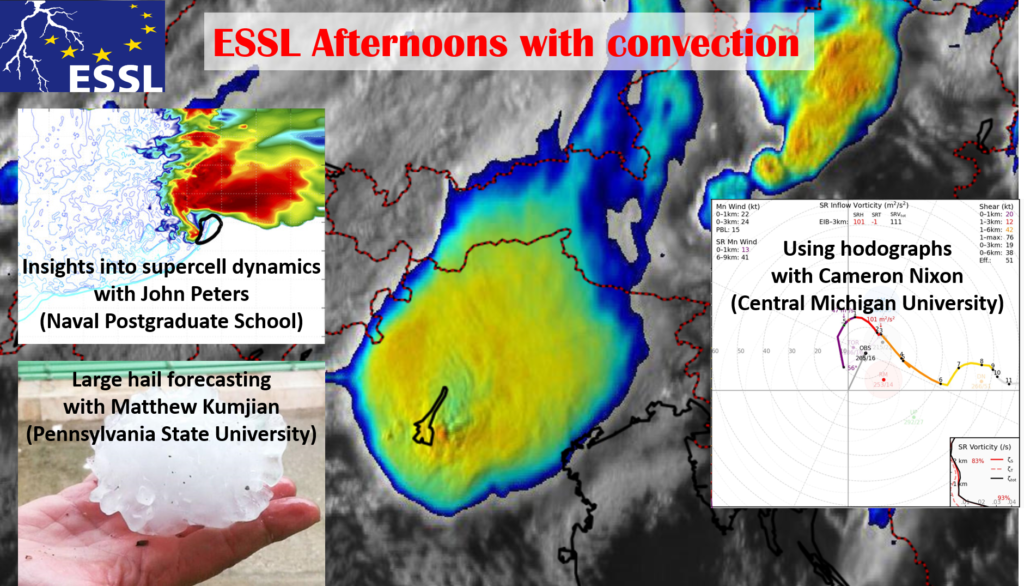
*** UPDATE on recordings ***
We will post links to the recordings of the webinars here as they become available (this also depends whether our speakers agree to having their talk recorded)
Matthew Kumjian: Forecasting large hail
John Peters: New insights on supercell dynamics
Cameron Nixon: Using hodographs
*** UPDATE on how to connect to the webinars ***
To connect to the webinars, just follow the link:
https://bluejeans.com/2536484999 and Bluejeans will guide through you through the rest! Make sure to reserve 5 – 10 minutes before the start of the webinar to allow your system to set up the Bluejeans and connect to the webinar.
The most important rule is to make sure your microphone is muted during the presentation! This will be done by default upon your arrival to the webinar, but please make sure this will be the case also individually. Depending on the number of participants, discussion will be either done throught the chat or more interactively.
*** GENERAL INFORMATION concerning the webinars ***
Last year we brought you a series of 3 “refreshers” to get ready for convective season. While the convective season picks up over Europe, this year we are organizing a series of 3 webinars called “Afternoons with convection” with severe weather experts to help you expand your horizons in convection forecasting!
The webinars will take place on the Wednesdays 2, 9 and 30 June and will start at 13 UTC (15:00 CEST). Each webinar consists of a lecture by a storm researcher followed by a discussion and concludes with a discussion of the current weather situation by Tomas Púčik and Christoph Gatzen (ESSL / ESTOFEX). The webinars end at 15 UTC.
You do not need to register for the webinars! On Mondays, two days before each webinar, we will post a link on ESSL’s Twitter (@essl_ecss) and Facebook channels and the webpage (essl.org) with instructions how to connect. As last year, we will use the BlueJeans videoconferencing system.
We are happy that the following expert researchers have offered to give a talk on their recent work in the Afternoons with Convection series:
2 June
2021, Matthew Kumjian (The Pennsylvania State University)
Forecasting and nowcasting large hail.
Large hail is the most costly thunderstorm-related threat and each year multiple events with hail-related injuries occur across Europe. Matt will discuss new findings of his research group concerning the physics of large hail formation, such as how the pre-convective environment influences the growth of large hailstones and how to recognize truly damaging hailstorms.
9 June
2021, John Peters (Naval Postgraduate School)
New insights on dynamics of supercells
Understanding why storms behave in a certain way is very important for all forecasters. John will talk about his novel research results concerning various aspects of storm dynamics, including how shear modulates the width and strength of convective updrafts, in what ways updrafts of supercells are special, and what role entrainment plays in the evolution of updrafts.
30 June 2021, Cameron Nixon (Central Michigan University)
Using hodographs to their fullest potential.
Long? Short? Curved? Straight? Hodographs offer a holistic approach to study vertical wind shear in the context of convective storm dynamics. Cameron will talk about how hodographs can predict supercell behavior, hazards, and even visual appearance, and how learning patterns rather than bulk shear or SRH will improve our forecasts in the future.
